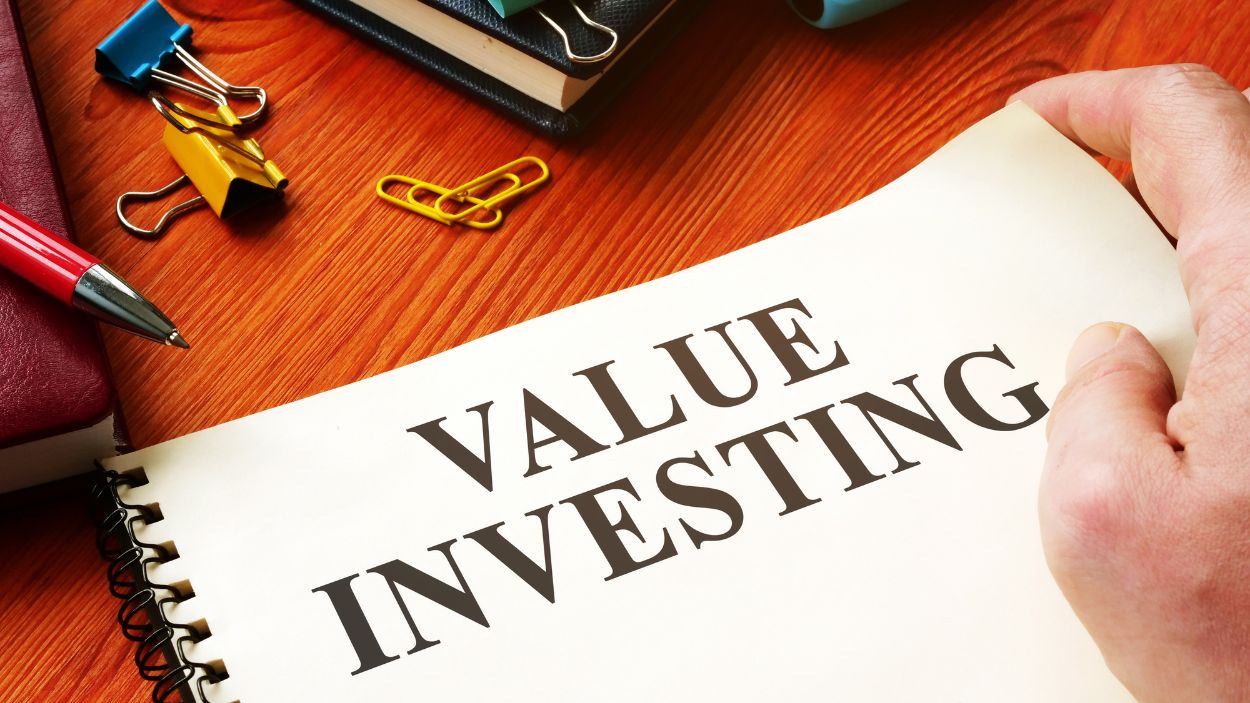As the name suggests, value investing is the process of finding investments that are a good deal for the money. A value investor actively looks for stocks, bonds, or other investments that he or she thinks have been undervalued in the market.
The price of an investment should be based on how much it will make in the future and how likely it is that it won’t. Value investing tries to find investments that are worth less than what they are worth.
Stock could be undervalued for many different reasons. When a public company reports low profits, investors often let their emotions get in the way and sell their shares. Their stock price goes down because of this. This drop-in profits might not tell us anything about the company’s future. This means that buying the stock at the now lower price per share gives you more value.
How Does Value Investing Work?
Value investing is a way to make money by buying stocks that look like they are underpriced. Investors may keep these assets in the hopes that their prices will go up in the future and make them some good money.
Value investing is buying low and selling high. In simple, that sounds great. But it’s much easier to say than to do. Valuations are personal and hard to guess. Value investors usually look at how a company has done in the past and how it is expected to do in the future to figure out how much it is worth now and how much it will be worth in the future. They make trades based on what they think will happen. If they are wrong about what will happen, they stand to lose a lot.
Benjamin Graham came up with the idea of value investing in the early 1900s. Soon after he came up with the idea of value investing, he wrote a book called “Security Analysis” with David Dodd. Graham and Dodd talk about the different kinds of value investing in their book.
How Value Investing Is Not Gambling
Investors usually use systematic strategies to buy many different value stocks. Instead of looking for “the next big thing,” which might grow a lot in the future, they look for investments that have been sold for less than they are worth on the market right now. There are many reasons why an investment, like a stock, might be worth less than it should. For example, a scandal may have caused the stock to drop for a short time. The hope here is that, over time, other investors will see the stock’s true value and help change its path.
Value investors think that the long game is the way to go. When value investors buy a stock they think is undervalued, they are following the school of thought that says a stock’s price will eventually reflect its true value or strength. This belief is not based on blind faith, but on careful analysis of how a stock has done and what it is like.
A lot of academic research has shown that a “value premium,” or a return that is higher than what you would get from investing in the general market, stays the same over time and with different types of assets. Some value investors use systematic strategies to buy baskets of stocks with good value traits, hoping that, over time, this basket will do better than the stocks in the basket.
Strategy for Investing in Value
How do investors figure out how much a company is worth? This is called “intrinsic value” in the world of investing, and it takes into account a number of things. Value investors usually look for stocks with a price-to-earnings ratio or PEG (price/earnings-to-growth) ratio that is lower than average. This helps them figure out how the price of a stock compares to its earnings per share (EPS) and the expected growth of the company.
Margin of safety is another important part of value investing. It is the difference between a stock’s true value and its current market price. A good margin of safety would be pretty high, since you would look at how a company or stock has done in the past and then buy it at a big enough discount to give you a cushion in case the stock goes down in the future.
In the past, value investing has been more profitable than investing in the stock market as a whole. This is because investors who focus on value investing try to avoid the herd mentality that can come from active trading.
Because value investing is a long-term strategy, it can take years to see any return. This is why experts often suggest buying a variety of value stocks. But long-term capital gains are taxed at a lower rate than short-term capital gains, which is a clear benefit.
Example of good investments
Warren Buffett is one of the most well-known value investors. (You may know his name.) He is best known for being very, very, very…rich. He is also famous for how he got so wealthy. Buffett’s approach to value investing has become a kind of bible for people who want to do the same thing.
Other ways to invest than in value
Value investing might not be a good choice if you don’t have the time and knowledge to build your own portfolio and trade on your own. Even so, it’s dangerous. There are hundreds or even thousands of people who don’t do as well as Warren Buffett when it comes to value investing. Less often, those people are in the news.
Value investors usually put their money into a few companies they think are undervalued instead of putting their money into stocks, bonds, and real estate. This means you’ve lost your money if those few investments don’t do well.
Spreading your money across many stocks, bonds, and real estate can be a good way to try to track the market instead of value investing. Studies show that the value of the S&P 500 has gone up over time, even though the market goes through booms and busts. Does this mean that this trend will keep going? No way! But this is an alternative to value investing if you don’t need your money right away and can handle the ups and downs of the market.
If you buy index exchange-traded funds, you can follow the market. These funds put your money into stocks, bonds, and real estate so that their performance matches that of the market. The main benefit is that it gives you more options. This makes it less likely that you will lose money. If one part of your portfolio does badly, you won’t have lost everything.
Also read


